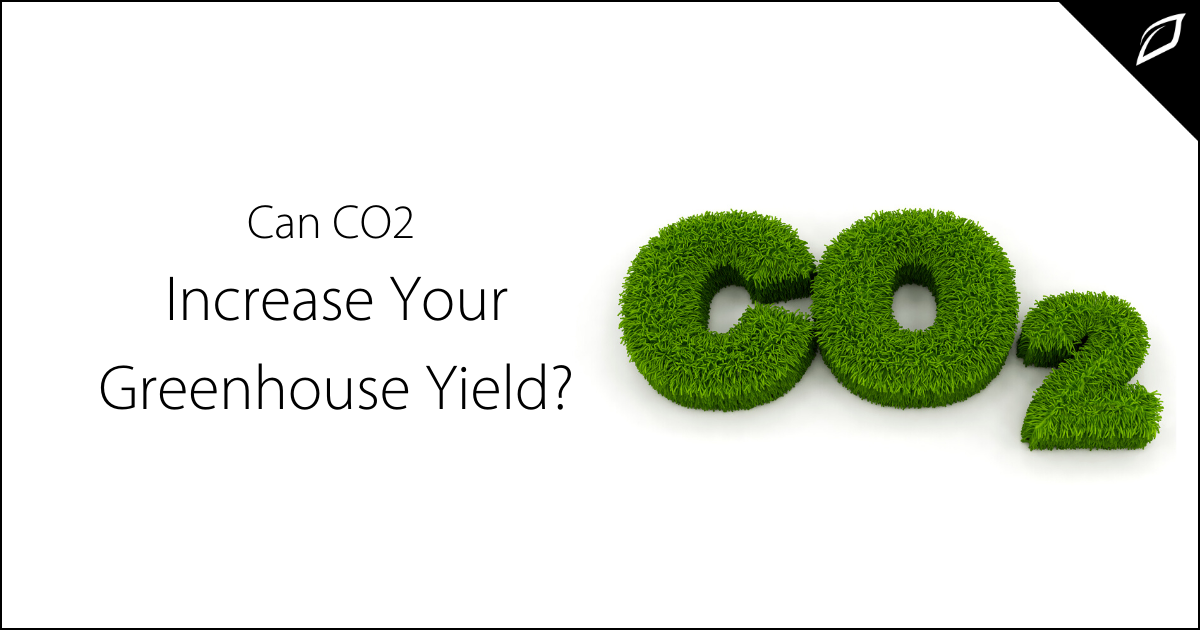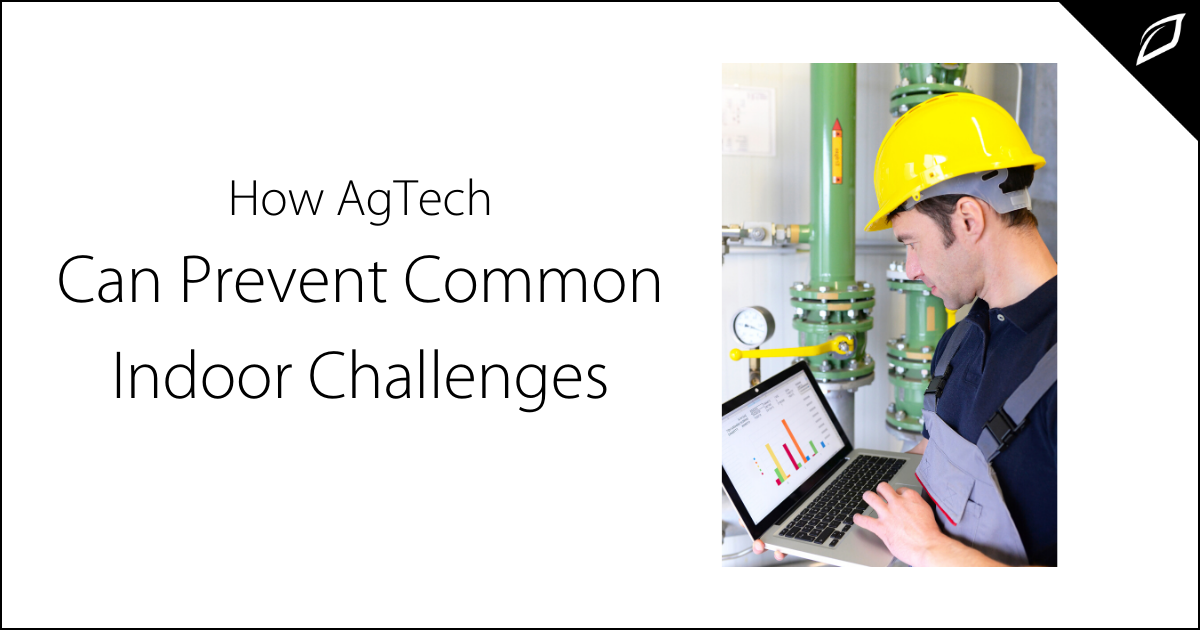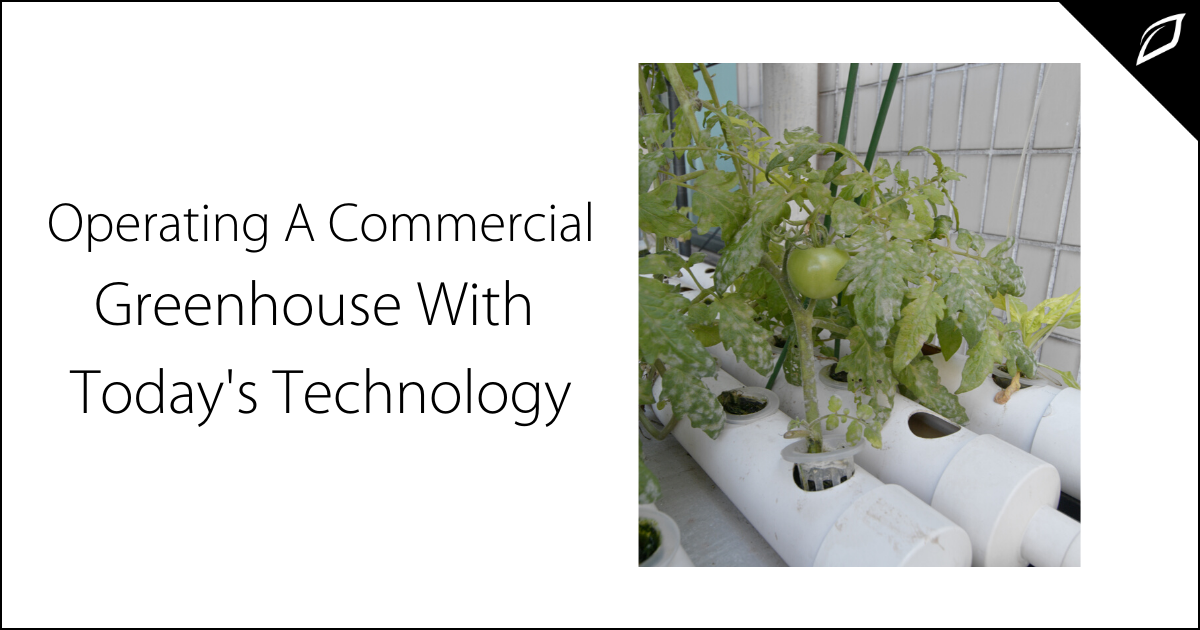Agtech Trends: Greenhouse Automation
Agtech has had a profound impact on the agricultural landscape. As a blanket term, "agtech" has been used to describe a host of innovations...


The quick answer is yes, but to properly adust CO2 levels, it's crucial to comprehend how the process works. So let's start with a little CO2 education.
Carbon dioxide, or CO2, is an odorless and colorless gas that is present in the air we breathe and is an essential component to the life of plants. Plants absorb CO2 during photosynthesis, the process through which they convert light into chemical energy.
During photosynthesis, CO2 is split into carbon and oxygen, its two basic elements. The oxygen is released into the air while the carbon combines with water and light to create sugar, which is then converted into carbohydrates. When plants absorb nutrients, they combine with the carbohydrates and form new plant tissue. Without CO2, light, water, and nutrients, the plant cannot thrive. Photosynthesis requires the right balance of all of these elements.
Some growers choose to increase CO2 levels to increase the growth rate of their plants. However, to do this properly, other conditions must change as well. The light levels must be higher, and the temperature should also increase. Additionally, since the plants will go through water and nutrients faster, reservoirs may need more attention. As plants can absorb large amounts of CO2, you could double your growth rate.
Ideally, you would keep the CO2 levels constant. However, this is not realistic in most situations, as you need to vent the grow room to control the heat buildup. Therefore, you should inject CO2 after venting the room. A common problem with CO2 is that growers get over-enthusiastic and assume more is better. However, high levels of CO2 will kill plants and is also toxic to humans. Therefore, venting the room before injecting more CO2 is a good idea because any leftover CO2 from the previous injection will be eliminated to prevent buildup.
The most common ways growers choose to add extra CO2 into the environment are bottled CO2 and CO2 generators. Both of these methods can be used with a CO2 monitor. The bottled CO2 method utilizes a CO2 tank, pressure gauge, flow meter, solenoid valve, and timer or controller.
Probably the most popular method is to used bottled gas. This type of CO2 injection consists of a CO2 tank, a pressure gauge (which monitors how much gas is remaining in the tank), a flow meter (to monitor the amount of gas being released), a solenoid valve (allows the flow of gas on and off as needed) and a method of controlling the solenoid valve (a timer or other controller). This method is popular among hobby growers because it is relatively simple.
In contrast, CO2 generators are mostly used by commercial growers but have caught on more with hobby growers now that smaller units are on the market. CO2 generators are more cost-effective than bottled CO2. They work well and are less expensive to operate. However, CO2 generators give off a lot of heat because they work by burning propane or natural gas. If you already struggle with keeping your grow room cool enough, this could be extremely detrimental to your plants. Additionally, if they are not working correctly, they may give off carbon monoxide instead of carbon dioxide, which can be fatal. If you find that your flame is burning orange or yellow, turn it off immediately and call a professional to fix it.
And now, you have the information you need to make an informed decision about providing increased CO2 levels for your greenhouse. So whether you're reading this for a hobby or a large commercial grow, we hope you get growing!

Agtech has had a profound impact on the agricultural landscape. As a blanket term, "agtech" has been used to describe a host of innovations...

Ag-tech tools deliver solutions for farmers to some of the most common, persistent growing issues. Smart sensors, monitors, and automated tools work...

Commercial growers looking for productivity and predictability have long turned to the greenhouse as the best means to establish a stable growing...